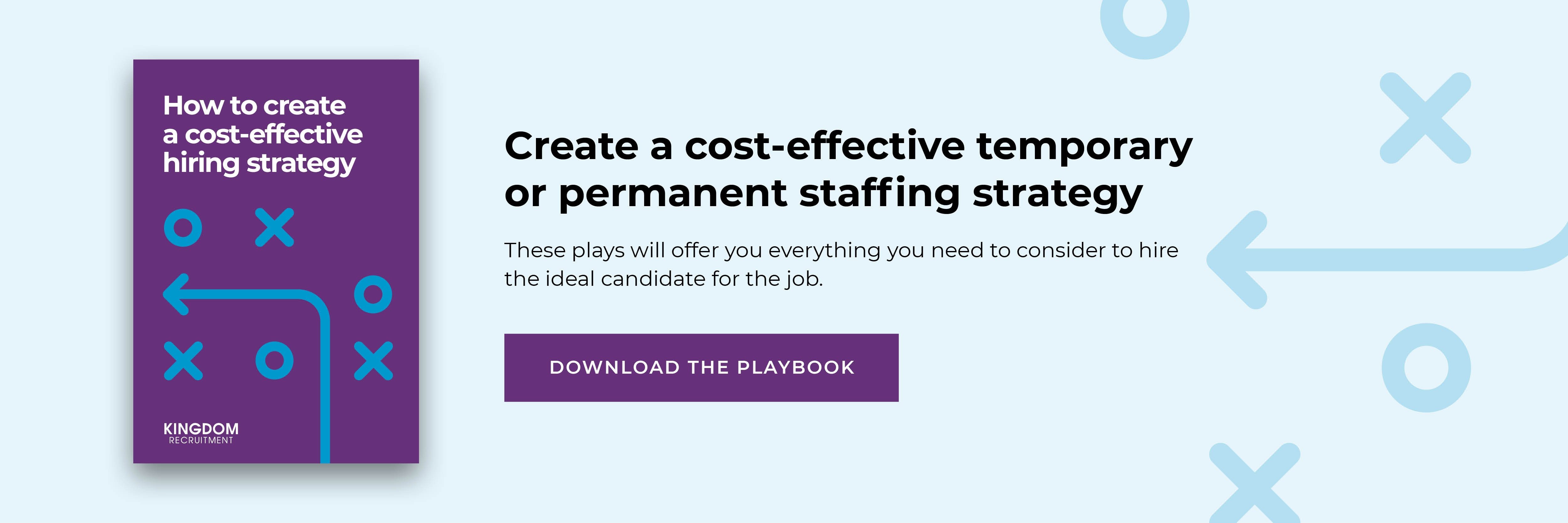Hiring employees costs thousands. If an employee turns out to be the wrong fit, it costs the business even more. That’s why it’s essential that strategies are put in place to avoid wasted time and resources.
Strategic workforce planning is one of the most effective ways to reduce these risks. Here’s what workforce planning is and how it can benefit businesses.
What is workforce planning?
Organisations choose to implement a workforce planning strategy to analyse their workforce and identify any necessary steps to prepare for future staffing needs. All businesses have resource requirements - and just like a business needs to assess financial requirements, the workforce needs to be analysed to ensure it meets the needs of the company’s goals and objectives.
To implement workforce planning, an organisation should conduct an assessment of its workforce and determine what actions need to be taken to ensure future requirements are met. These actions will depend on both external and internal factors, such as skill availability and the age of the workforce.
By taking these factors into account, organisations can determine whether future skill needs will be met through recruiting, training current employees or outsourcing the work.
Completing all the research and implementing a workforce planning strategy can take a lot of time and resources. Thankfully, there is the option to outsource workforce planning to an experienced agency.
Although many people see workforce planning as only a tool for anticipating employment needs, it’s also vital in ensuring staff have the right training. For optimal success, organisations should conduct regular, comprehensive workforce planning assessments. This means staffing requirements can be regularly measured and staff can receive the training they need to effectively respond to the needs of the business.
At Kingdom Recruitment, we work as a collaborative partner to find and retain talent. We work with our clients as a strategic adviser, not just a volume recruiter, taking their unique workforce requirements into account while also working to meet their long-term strategy. Ultimately, this saves our clients time and money and helps them achieve their goals.
What are the benefits of workforce planning?
1. Anticipate and plan for change
Strategic workforce planning helps organisations define key benchmarks that inform executives about workforce issues. In turn, this helps equip them with tools needed to identify any workforce risks before it impacts the business' objectives.
With this knowledge, organisations can determine if workforce costs are expected to grow with the company and if there are any employees that are expected to retire soon. How will both these factors affect the business?
2. Decrease hiring costs
One hire costs a business valuable time and resources. That’s why obtaining a detailed overview of the workforce and organisation needs - as well as productivity levels required for success - is essential to make sure the business is getting the most out of the talent it has.
Ultimately, this will decrease recruitment costs and ensure the day-to-day operations run more effectively. Greater employee morale will positively affect productivity and therefore revenue.
3. Improve recruitment processes
Through using analytics, strategic workforce planning enables organisations to outline the ideal skills and traits of the highest performers in each department. In turn, this helps properly inform the business of the criteria it should be looking for in candidates that are most likely to suit business goals and culture.
With this knowledge, employee retention rate will be improved, as well as interview-to-hire rate - and it’ll save the company time in the recruitment process.
4. Align HR with business strategy
Workforce planning helps ensure HR goals are supported and strengthen the business’ culture. As a result, employee retention will improve which will positively influence the company’s growth.
Policies that can be aligned with HR through strategic workforce planning include:
- Data protection
- Employee assistance
- Employee benefits
- Wellness programmes
- Career development programmes
- Learning and development
5. Drive allocation of talent investments
Through implementing strategic workforce planning, a business can determine which groups of employees deliver the highest ROI and therefore may require greater investment in training and development.
Not only that but it will also outline any areas that need extra resources to add more value to the business and reach its full potential. It will also identify which roles are important for growth, so steps to protect those roles can be implemented.
6. Implement retention tactics
Without the right information and tools, there's the risk that raises, bonuses and promotions could be misused when they should be used to prevent resignations. Strategic workforce planning enables businesses to leverage predictive analytics and identify top performers.
It will also identify people in key roles who may be at risk of taking their skills elsewhere. With this information, a retention strategy can be implemented to minimise risk and continue to grow.
To learn more about creating a strategic workforce strategy, take a look at our playbook.
Discover how to create a cost-effective hiring strategy
Creating an effective hiring strategy is essential to business success. This strategy needs to determine who you should hire, the best way to hire them and when.

%201.jpg)
